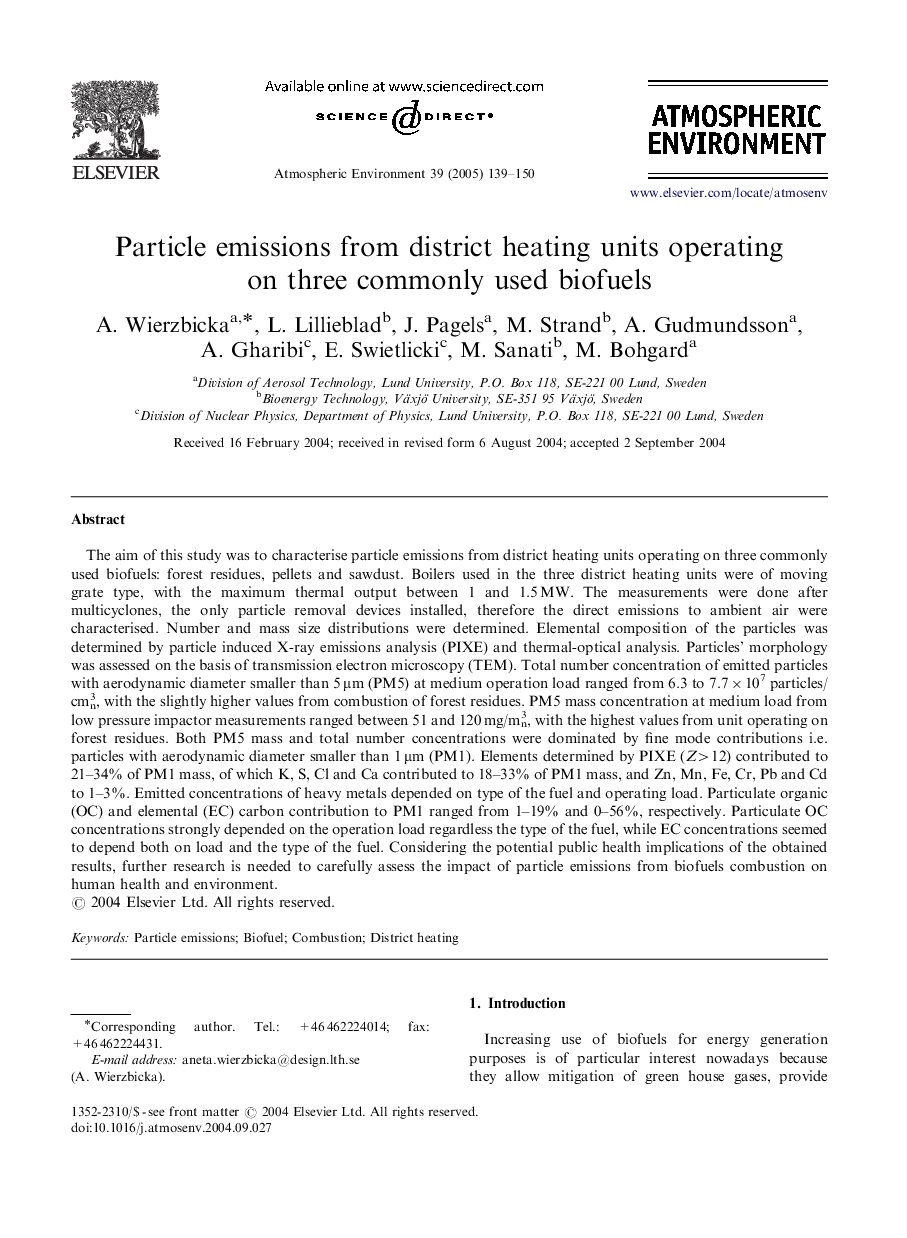| کد مقاله | کد نشریه | سال انتشار | مقاله انگلیسی | نسخه تمام متن |
|---|---|---|---|---|
| 9458791 | 1311300 | 2005 | 12 صفحه PDF | دانلود رایگان |
عنوان انگلیسی مقاله ISI
Particle emissions from district heating units operating on three commonly used biofuels
دانلود مقاله + سفارش ترجمه
دانلود مقاله ISI انگلیسی
رایگان برای ایرانیان
کلمات کلیدی
موضوعات مرتبط
مهندسی و علوم پایه
علوم زمین و سیارات
علم هواشناسی
پیش نمایش صفحه اول مقاله

چکیده انگلیسی
The aim of this study was to characterise particle emissions from district heating units operating on three commonly used biofuels: forest residues, pellets and sawdust. Boilers used in the three district heating units were of moving grate type, with the maximum thermal output between 1 and 1.5 MW. The measurements were done after multicyclones, the only particle removal devices installed, therefore the direct emissions to ambient air were characterised. Number and mass size distributions were determined. Elemental composition of the particles was determined by particle induced X-ray emissions analysis (PIXE) and thermal-optical analysis. Particles' morphology was assessed on the basis of transmission electron microscopy (TEM). Total number concentration of emitted particles with aerodynamic diameter smaller than 5 μm (PM5) at medium operation load ranged from 6.3 to 7.7Ã107 particles/cmn3, with the slightly higher values from combustion of forest residues. PM5 mass concentration at medium load from low pressure impactor measurements ranged between 51 and 120 mg/mn3, with the highest values from unit operating on forest residues. Both PM5 mass and total number concentrations were dominated by fine mode contributions i.e. particles with aerodynamic diameter smaller than 1 μm (PM1). Elements determined by PIXE (Z>12) contributed to 21-34% of PM1 mass, of which K, S, Cl and Ca contributed to 18-33% of PM1 mass, and Zn, Mn, Fe, Cr, Pb and Cd to 1-3%. Emitted concentrations of heavy metals depended on type of the fuel and operating load. Particulate organic (OC) and elemental (EC) carbon contribution to PM1 ranged from 1-19% and 0-56%, respectively. Particulate OC concentrations strongly depended on the operation load regardless the type of the fuel, while EC concentrations seemed to depend both on load and the type of the fuel. Considering the potential public health implications of the obtained results, further research is needed to carefully assess the impact of particle emissions from biofuels combustion on human health and environment.
ناشر
Database: Elsevier - ScienceDirect (ساینس دایرکت)
Journal: Atmospheric Environment - Volume 39, Issue 1, January 2005, Pages 139-150
Journal: Atmospheric Environment - Volume 39, Issue 1, January 2005, Pages 139-150
نویسندگان
A. Wierzbicka, L. Lillieblad, J. Pagels, M. Strand, A. Gudmundsson, A. Gharibi, E. Swietlicki, M. Sanati, M. Bohgard,